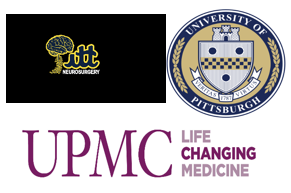Enhancing Physician Awareness as a Powerful Tool Enhance Value Of Surgical Care
The central core of this initiative is to increase value of care by enhancing physician awareness of cost and outcome relevant issues. Although intrinsically physicians want to provide high quality care at lower cost, they are not knowledgeable of their own outcomes or the cost/alternatives available of items used during the episode of care. Three examples of mature initiatives will be described.
Postoperative neurosurgical infections
Infections following neurosurgical procedures result in significant morbidity and mortality, as well as increased costs. Therefore, reductions of postoperative infections result both in increased quality and reduced cost. One issue is that most surgeons are not aware of their own infection rates, and oversight on these outcomes is often not optimal. Intervention: We implemented an initiative, in collaboration with our infection control unit where infections are independently adjudicated by the infection control unit following prespecified criteria based on the Center for Disease Control National Healthcare Safety Network definitions of a surgical site infection. Once a postoperative infection is identified, the faculty and resident receive an email describing the case. This both informs the surgeons as well as provides them with an opportunity to challenge the adjudication. The department chair is copied on the communication. Every three months, a report is delivered to the faculty and residents with their infection rates as well as rank compared to their peers. Each individual only knows their own rank, and the Chairman has the complete rank list, providing the Chair an opportunity for oversight and targeted education. Results: Since inception, cranial infection rates have dropped by 37.5% and resulted in average annual inpatient savings of $234,175 from preventing craniotomy infections and $121,125 from preventing shunt infections. Outpatient savings are likely of the same magnitude but more challenging to determine at this point.
Cost of VP shunts
VP shunts are used to treat hydrocephalus. There are two main shunt types, fixed pressure and programmable. Fixed pressure shunts drain CSF at a set pressure, whereas programmable shunts can be noninvasively manipulated to alter the set pressure for CSF drainage. Programmable shunts are 2-7fold more expensive than fixed pressure shunts. Our hospital had three fixed pressure shunt and four programmable shunts. We evaluated actual surgical costs between faculty members and found a six-fold difference between the least and most expensive surgeon. When evaluating the driver of variability, it was mostly accounted by the shunt type used. We then evaluated the outcome (determined by need of reoperation as a proxy for malfunction); the surgeon that consistently used the most economic fixed pressure shunt had almost the lowest reoperation rate. Intervention: 1) Presented the data to the faculty and residents which resulted in a significant greater proportion of use of the fixed pressure shunts; 2) In collaboration with our supply chain colleagues, we negotiated better costs of the shunts and reduced the number of shunts in the inventory (2 fixed and 1 programmable). Result: This initiative resulted in approximately $108,760 in annual savings and no impact on quality of care.
Use of dural substitute products
There are multiple alternatives of dural substitutes to cover the brain following neurosurgical procedures. Surgeons were not aware of the difference in cost between products. There is an approximate 30-fold difference in cost between two products. Most surgeons were using the more expensive one. Intervention: Educate surgeons on the difference is costs as well appropriate use of these products. Result: Total supply cost of dural grafts significantly decreased by 54% generating approximately $103,000 in yearly savings.

